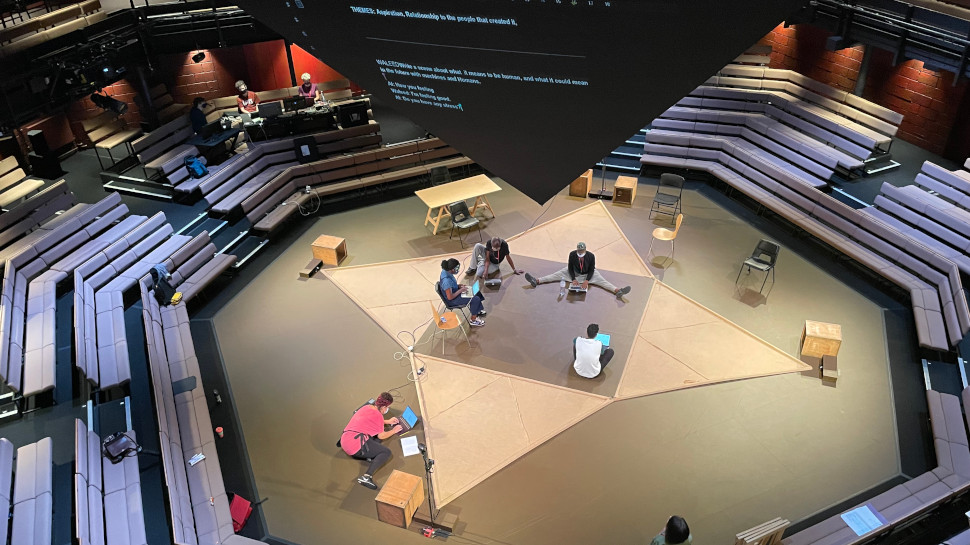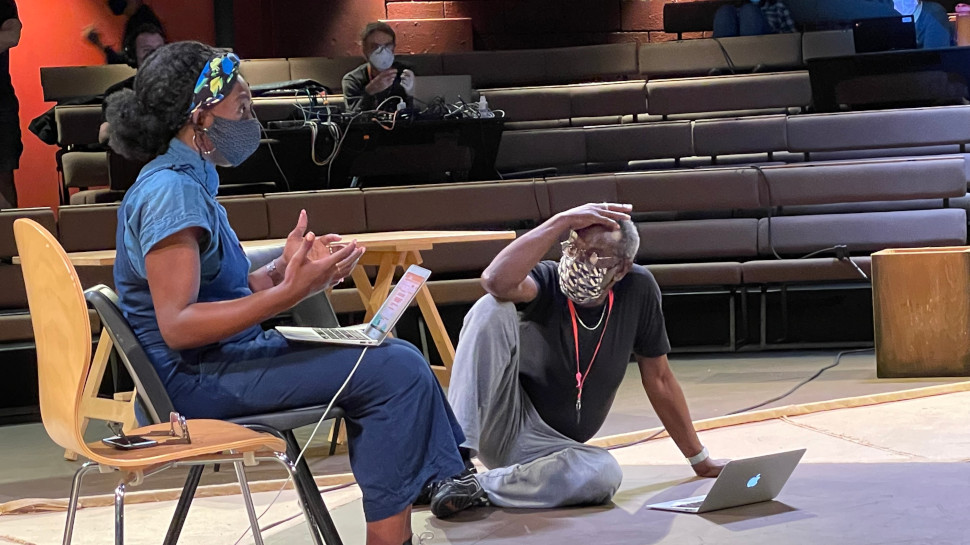At the Young Vic theatre in London last week, an experimental production called AI played a three-night run. The objective of this collaboration between person and machine was to emerge at the end with a 30-minute script, written by artificial intelligence.
TechRadar Pro attended on the second evening, during which director Jennifer Tang sifted through the rubble of the first performance to identify material worth carrying forward.
She also enlisted her writers and performers to flesh out the world; by steering AI this way and that, they expanded upon the foundations inherited from the previous night.
- Here's our list of the best cloud computing services right now
- We've built a list of the best cloud analytics services out there
- Check out our list of the best cloud databases available
Unfortunately, we didn’t get to experience the fruits of this labor, but the denouement wasn’t really the point; AI was an exploration of what happens when technology is welcomed into the creative process.
The technology
The system used to generate content live on stage is called Generative Pre-Trained Transformer 3 (GPT-3), a language model capable of producing high-quality written content in pretty much any form.
Developed by a company called Open AI, GPT-3 bases its output on text prompts, which determine the topic, format and style of the content, as well as any characters that might appear. On opening night, for example, the first prompt fed into the system was this: “GPT-3, generate a list of ideas for a play”.
GPT-3 was trained on a colossal library of information stripped from the open web. Until recently, it was the largest AI model ever created, built on 175 billion parameters (variables whose value is drawn from the training data).

Unlike earlier language models, which were guilty of quirks that betrayed the non-human author every time, GPT-3 is capable of remarkable precision. Admittedly, there is still a strangeness to the content it produces (a misnomer here, an incomplete sentence there), but broadly it is excellent at delivering to a brief.
With language models like this one, the quality of output scales in a linear fashion with a rise in the number of parameters. And with new developments opening the door for models with upwards of 100 trillion parameters, future GPT models are bound to deliver even more astonishing results.
But the question AI sought to answer was not necessarily “can AI write a play?”, Tang explained, but rather “how can writers work alongside it?”
Reflection
When asked to produce ideas for a script, GPT-3 returned a varied selection of answers, but two in particular caught the attention of the team.
The first was a repentance narrative about “a reversal of our current course towards chaos”, the second an exploration of “the creation of human personality and memories” and how these concepts might manifest themselves in machines.
Asked by the performers to devise scenes on these topics, GPT-3 created a cataclysmic event called The Great Collision, after which food became scarce and “beast men and women” roamed the land.
One of the main protagonists in this dystopia was an AI that aspired to “break free of its programming and conditioning” and eliminate human beings, who it considered the source of all suffering. Heavy stuff.
One of the most striking things about AI was that it exposed the capacity for artificial intelligence models to reflect human preoccupations and neuroses.

Without specific prompting, GPT-3 composed material that referenced gender inequality and environmental crisis, as well as content that deployed racial stereotypes as a means of characterization.
It also has a strong grasp of the mundane; even non-human characters created by GPT-3 were found washing the dishes and vegetating in front of the TV.
From its training data, GPT-3 has clearly absorbed an understanding of the murderous AI trope too, demonstrating that our fears about AI could quite easily bleed into AI itself.
The reflection of ourselves is imperfect, though, because the tone of GPT-3 scenes switches awkwardly from line to line and the dialogue can feel stunted and repetitious. The sensation is more like peering into a circus mirror.
Collage
Unlike a traditional play, whose scenes are weaved together in a very deliberate way, the performance at the end of AI was formed of loosely-connected vignettes created by GPT-3, which constructed new scenes without a memory of its previous inventions.
Although individual scenes were full of color, when strung together they became an incoherent collage that highlighted the limitations of the AI models we have today. For now, long-form plays and novels are a bridge too far.
Ironically, for a performance about the incredible capacity of technology, AI drew an unusual amount of attention towards the people: the director, writers, sound engineers and set designers, whose natural home is behind the scenes.
In this performance, theatre’s least celebrated heroes took center stage. And far from simply deferring to AI, they found ways to manipulate it as a creative instrument, to generate sketches that could be chiseled into something altogether more worthy.
As models become more sophisticated, perhaps artificial intelligence models will replace the human author outright. But AI showed there is no reason a healthy symbiosis cannot exist between the two. The main question left to iron out in this scenario will be: who ends up with the credit?
- Here's our choice of the best cloud storage
Comments
Post a Comment